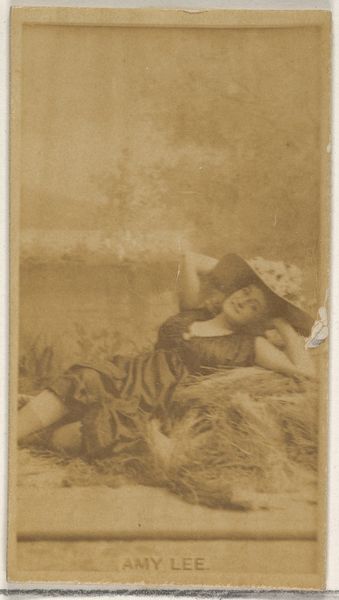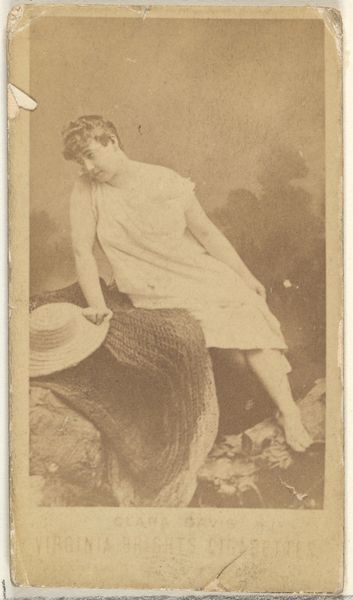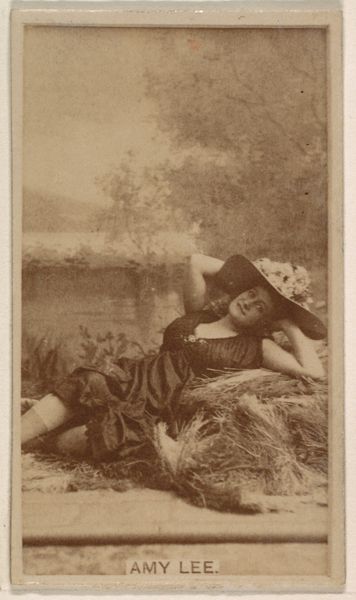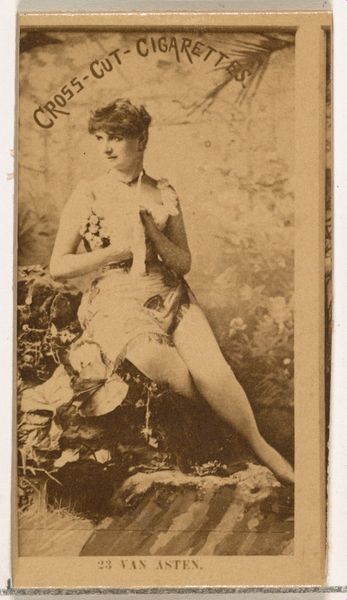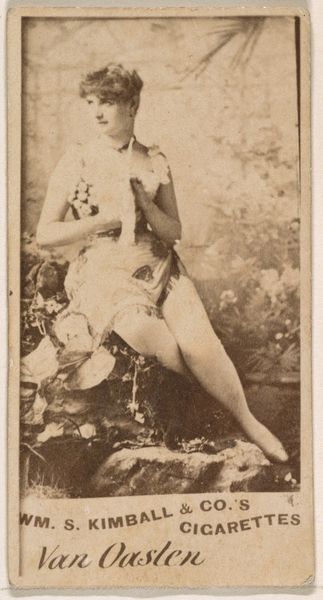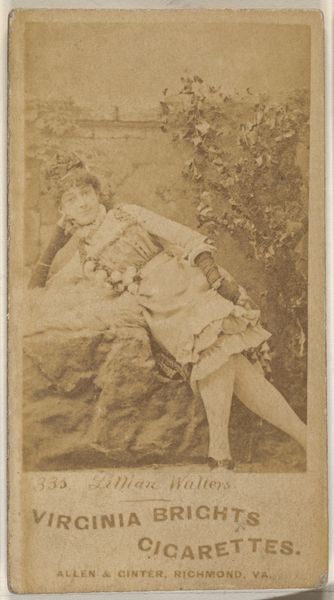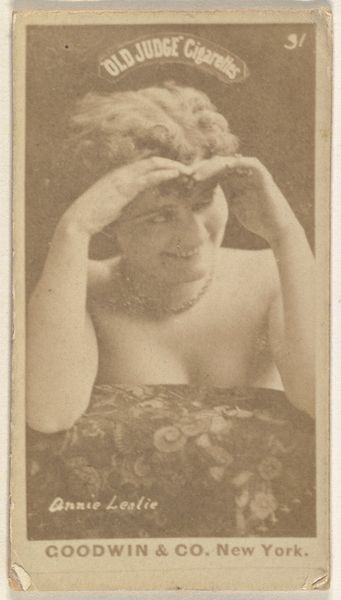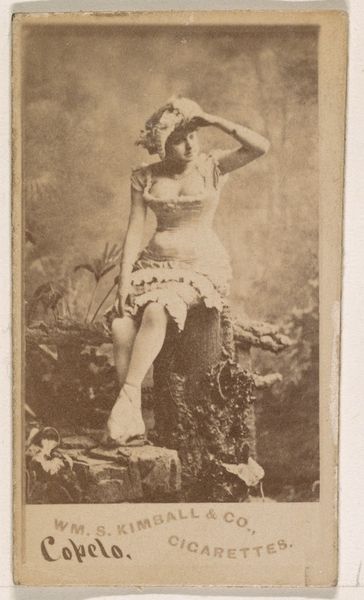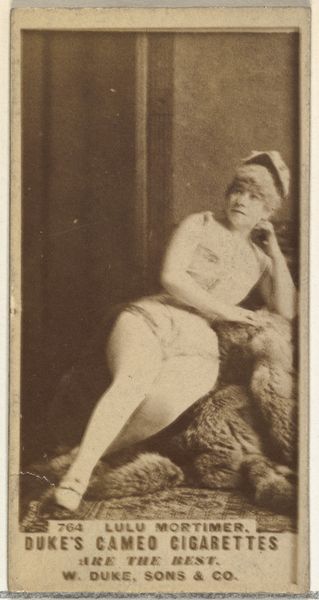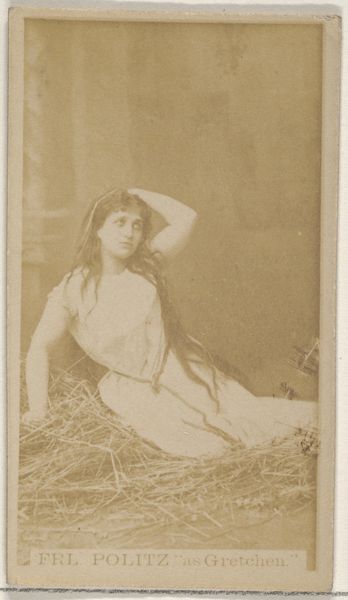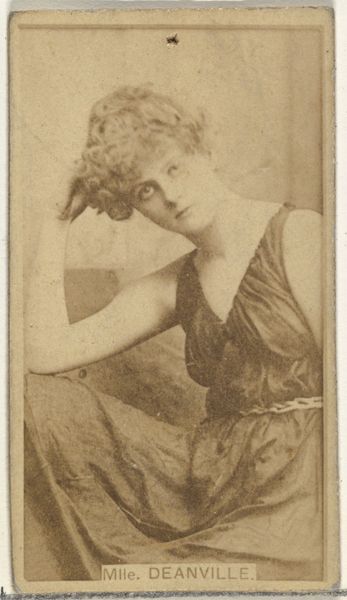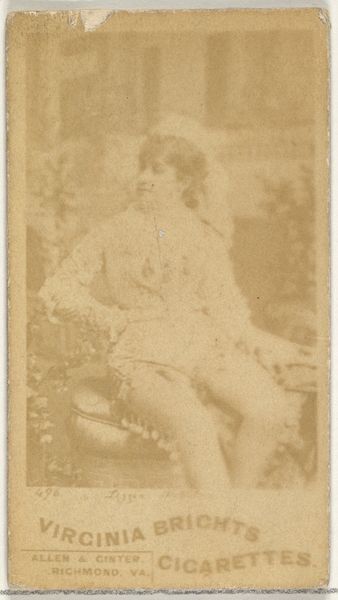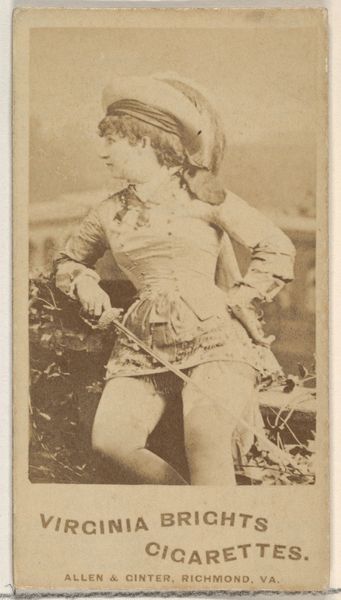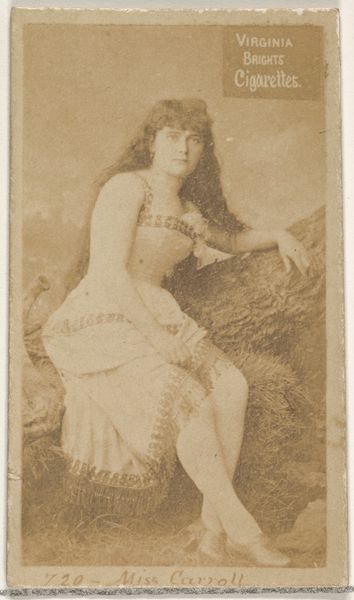
Margarette Urbanska, from the Actors and Actresses series (N45, Type 8) for Virginia Brights Cigarettes 1885 - 1891
0:00
0:00
drawing, print, photography
#
portrait
#
drawing
# print
#
photography
#
genre-painting
Dimensions: Sheet: 2 5/8 x 1 1/2 in. (6.6 x 3.8 cm)
Copyright: Public Domain
Curator: Immediately, there's this languid, dreamlike quality. A sepia-toned reverie, almost. Editor: It's a photograph, right? More precisely, a print, one of the "Actors and Actresses" series produced by Allen & Ginter between 1885 and 1891 for Virginia Brights Cigarettes. Specifically, this card is titled "Margarette Urbanska, from the Actors and Actresses series (N45, Type 8)." It’s part of a larger consumer culture artifact now housed in the Metropolitan Museum. Curator: Right, Urbanska looks as though she’s stepped right out of a pre-Raphaelite painting. Reclining, a book open…is it an invitation, or is she completely lost in the narrative? The light seems to catch her hair like spun gold, yet the shadows ground the image. Editor: It's intriguing how tobacco companies used images of beauty and artistry to promote their products. What looks like art on the surface is deeply embedded in production and consumption cycles. This photograph, mass-produced and distributed in cigarette packs, made Urbanska accessible and consumable. Curator: Consumable…a sharp way to put it, and probably accurate. Still, that pose—it's consciously artistic. It feels like she's staging herself for an audience beyond just those buying cigarettes. There's an intent to communicate something about allure, maybe a little defiance. Editor: It highlights the commodification of image. The photographic print flattens not just the image itself but Urbanksa's very being. How does a celebrated stage actor then circulate into mass culture? Also, it brings up all sorts of questions about the labor involved – from the studio to the factory. Curator: But, labor aside, doesn't it hint at something profound about human connection and how even ephemeral images capture slivers of someone's soul? What was it like for her, as a performer, knowing this version of herself was being spread far and wide, tucked in cigarette packets? Editor: And who held these photographs? Smoker collectors of promotional merchandise? What material relations exist within this image, beyond artistry and affect? Thinking through it that way makes me a bit more aware of its limitations as a source. Curator: It does make one question how we understand the impact these images might have made then, and even now, knowing the hands that created them and the industry that drove them into being. Editor: I appreciate the added context; this seemingly simple photographic print pulls at threads tied tightly to society, material culture, performance, and production, too. It is worth another look.
Comments
No comments
Be the first to comment and join the conversation on the ultimate creative platform.
